Types of Torsion Springs
Types of
Torsion Springs
Torsion springs are helical springs that work by
twisting or rotating. When force is applied to the ends of the spring, it
twists around its axis to store mechanical energy. These springs are widely
used in devices where rotational motion is needed, such as garage doors,
clothespins, and automotive components.
There are multiple types of torsion springs,
classified based on coil direction, leg design, load capacity, material,
and application. Depending on the intended use, torsion springs can be single
torsion, double torsion, helical torsion, clock springs,
or custom formed springs, each tailored for specific torque and angular
deflection.
Applications
of Torsion Springs
- Automotive (Trunks, Hoods, Clutches, Pedals)
- Aerospace
(Landing gears, Control systems)
- Industrial
Machinery (Door mechanisms, Loaders)
- Electrical
Devices (Switches, Circuit Breakers)
- Consumer
Goods (Clothes pegs, Clipboards)
- Medical
Devices (Surgical tools, Scanners)
- Toys
and Mechanical Watches (Clock Springs)
- Furniture
(Chair recliners, Hinges)
- Agriculture
Equipment (Seeders, Harvesters)
- Construction
Tools (Latches, Tension arms)
Features
and Their Uses
|
Feature
|
Use / Benefit
|
|
Helical Coil Design
|
Allows torque absorption and controlled rotation |
Leg Configurations (Straight, Hooked, Custom)
|
Enables diverse mechanical interface designs
|
|
Material Variety (SS, Phosphor Bronze, Music Wire)
|
Tailored for temperature, corrosion, or load needs
|
|
Rotational Force Resistance
|
Ideal for twisting applications requiring counterbalance
|
|
Compact Energy Storage
|
Provides torque in small spaces efficiently
|
|
Right-Hand or Left-Hand Wind
|
Matches direction of force in machinery
|
|
Fatigue and Load Bearing
|
Designed for thousands to millions of cycles in critical
equipment
|
|
Double Torsion Options
|
Offers higher torque or balanced application forces
|
|
Preloading Capability
|
Ensures operational readiness in high-precision systems
|
|
Corrosion-Resistant Coating
|
Long life in demanding environments (e.g., marine or
outdoor use)
|
Key
Points – Torsion Springs
- ? Provide torque or rotary force through angular deflection
- ?
Made from high-carbon spring steel, stainless steel, or exotic
alloys
- ?
Can be clockwise or counterclockwise wound
- ?
Available in single or double torsion coil designs
- ?
Ideal for cyclical and rotational motion in machines
- ?
Must be installed with correct orientation to function properly
- ?
Torque output depends on wire diameter, coil diameter, and number of
coils
- ?
Require precise tolerances in industrial or aerospace-grade designs
- ?
Offered with custom leg styles, ends, and coatings
- ?
Often designed as per customer specifications and load requirements
Common
Types of Torsion Springs
- Single
Torsion Spring
- One
coil body with two arms
- Common
in clothespins, simple mechanical devices
- Double
Torsion Spring
- Two
coils wound in opposite directions with a central connecting leg
- Used
in automotive and industrial devices for balanced force
- Clock
Spring
- Flat
spiral wound, often found in clocks, retractable cords, and seat belts
- Delivers
torque in a flat profile
- Helical
Torsion Spring
- Standard
helical coil design used in most mechanical systems
- Offers
variable leg lengths and bending styles
- Custom
Formed Torsion Spring
- Designed
to fit unique geometries or motion paths
- Common
in appliances and specialized tools
Top 10
FAQs – Torsion Springs
- Q:
What is a torsion spring used for?
A: It’s used to apply torque or store rotational energy in mechanical systems. - Q:
What’s the difference between single and double torsion springs?
A: Single springs have one coil, while double springs have two
coils for greater or balanced torque.
- Q:
Can torsion springs be customized?
A: Yes, they can be designed for specific torque, deflection,
material, and environmental needs.
- Q:
How do I choose the direction of winding?
A: Match the spring's wind direction to the rotational force of
your application (left-hand or right-hand).
- Q:
What materials are best for outdoor or corrosive environments?
A: Stainless steel or coated carbon steel are ideal for corrosion
resistance.
- Q:
What kind of motion do torsion springs produce?
A: They produce angular or rotational motion around an axis.
- Q:
Can torsion springs be re-used?
A: Reuse is possible in low-cycle applications but not recommended
for critical systems due to fatigue.
- Q:
What determines a spring’s torque rating?
A: Wire diameter, number of coils, coil diameter, and material
properties.
- Q:
Are torsion springs safe to install?
A: Installation must follow proper orientation and torque limits to
avoid failure or injury.
- Q:
How long do torsion springs last?
A: With proper design and use, they can last hundreds of thousands
to millions of cycles.
Contact
Us For More Details On :
Call - +91 98988 43173
Email - info@durgaspring.com
Website –
www. durgaspring.com
YouTube -
www.youtube.com/@durgasprings
Facebook
- www.facebook.com/people/Durga-spring-industries
Filter Using Product Tags

